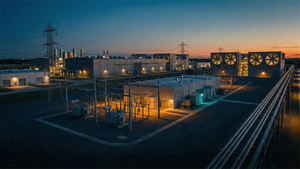
As global financial markets navigate periods of volatility, a persistent and powerful sentiment among bullish investors – the "buy the dip" mentality – continues to shape market dynamics. This deeply ingrained behavior, particularly evident in recent market pullbacks, sees temporary declines not as harbingers of doom, but as strategic opportunities to acquire assets at a discount. The immediate implication is a remarkable resilience in equity markets, often leading to swift recoveries, but its ripple effects are now being closely watched for their potential to influence investment flows into various asset classes, including the crucial commodities sector.
This prevailing optimism, fueled by a prolonged period of market growth and conditioned by consistent rewards for those who capitalize on downturns, suggests a foundational belief in the market's long-term upward trajectory. However, as this aggressive dip-buying sustains high valuations, especially in growth-oriented sectors, analysts are beginning to scrutinize how this behavior might translate into diversified portfolios, potentially driving capital into commodities as a hedge against inflation, a play on global growth, or simply another undervalued opportunity in a broadly bullish environment. The interplay between equity market resilience and commodity market movements is becoming a focal point for investors seeking to understand the next phase of market evolution.
The Resilient Rebound: A Closer Look at Recent Market Dynamics
The "buy the dip" phenomenon has been a defining characteristic of recent market behavior, transforming potential moments of crisis into opportunities for accumulation. A clear example unfolded in early November 2025, when a significant tech-led slide saw major artificial intelligence (AI) related stocks experience a sharp, albeit brief, downturn. Rather than precipitating a broader sell-off, this dip was met with a rapid influx of buying interest, particularly from retail investors, who perceived it as an opportune moment to enter or increase their positions in high-growth sectors. This swift rebound underscored the market's underlying bullish conviction and the readiness of investors to capitalize on perceived bargains.
Another notable instance occurred in April 2025, following a tariff-induced market selloff that initially sparked concerns about global trade tensions. Despite the geopolitical uncertainty, individual investors demonstrated record single-day stock purchases, with capital flows reaching an impressive $30 billion by the week's end. This aggressive buying spree helped to stabilize the market and mitigate further declines, showcasing the collective power of bullish sentiment. Key players in this dynamic include not only active retail investors but also institutional funds, particularly passive investment vehicles like index funds and target-date retirement accounts. These funds, through their rebalancing mechanisms, often automatically allocate more capital to equities following price drops, further institutionalizing the "buy the dip" behavior. The Federal Reserve's continued easing of financial conditions and the ongoing AI-driven boom in capital expenditures have also provided a supportive backdrop, encouraging investors to maintain an optimistic outlook despite occasional market tremors.
Corporate Fortunes: Winners and Losers in a Dip-Buying Market
The "buy the dip" phenomenon and its potential commodity implications create a complex landscape of winners and losers across various corporate sectors. Companies that are perceived as high-quality growth stocks, especially those at the forefront of technological innovation, tend to be significant beneficiaries during market pullbacks.
For instance, major technology companies heavily invested in AI, such as NVIDIA (NASDAQ: NVDA), Microsoft (NASDAQ: MSFT), and Alphabet (NASDAQ: GOOGL), often see their dips quickly bought up. Investors view these companies as having strong long-term growth trajectories, making temporary price declines attractive entry points. Similarly, other growth-oriented companies with robust fundamentals across various sectors, from software to renewable energy, are likely to attract capital during market corrections. Companies with strong balance sheets and consistent earnings growth are also favored, as they are seen as more resilient during volatile periods.
On the commodities front, the implications are more nuanced. If the "buy the dip" mentality is underpinned by broader economic optimism and expectations of continued global growth, then companies in the materials and energy sectors could stand to gain. For example, mining giants like BHP Group (ASX: BHP) and Rio Tinto (ASX: RIO) could benefit from increased demand for industrial metals such as copper and iron ore, driven by infrastructure development and manufacturing activity. Similarly, oil and gas producers like ExxonMobil (NYSE: XOM) and Chevron (NYSE: CVX) might see improved prospects if economic expansion translates into higher energy consumption, though concerns about supply gluts could temper enthusiasm.
Conversely, companies that are highly leveraged, have weak fundamentals, or operate in sectors facing structural headwinds may find themselves losing out, as investors prioritize quality and growth during market corrections. Furthermore, companies that are heavily reliant on stable commodity prices, but do not have the scale or diversification to withstand price volatility, could face challenges if commodity markets experience significant swings. For example, smaller, undiversified mining operations or energy producers might struggle more than their larger counterparts if commodity prices do not recover as quickly or sustainably as anticipated.
Broader Significance: Trends, Ripple Effects, and Historical Echoes
The pervasive "buy the dip" sentiment among bullish investors is not merely a short-term market reaction; it signifies a deeper integration into broader industry trends and carries significant wider implications. This behavior has been a cornerstone of the prolonged bull market witnessed over the past decade, consistently providing a floor for asset prices and contributing to rapid recoveries from downturns. It reflects a fundamental shift in investor psychology, where corrections are increasingly viewed as healthy recalibrations rather than harbingers of prolonged bear markets.
One of the most significant ripple effects of this trend is the potential for stretched valuations, particularly in high-growth sectors like technology and AI. While the consistent influx of capital during dips helps to stabilize markets, it can also lead to a detachment of asset prices from their intrinsic values, making the market more susceptible to sharper corrections if corporate earnings disappoint or economic fundamentals deteriorate unexpectedly. This environment also fosters increased speculative behavior, with record-high margin usage and intense interest in assets with extremely high price-to-sales ratios becoming more common. This speculative fervor, while indicative of strong bullish conviction, also introduces an element of fragility into the market.
From a regulatory standpoint, the sustained "buy the dip" phenomenon has not yet triggered significant new policy interventions, but financial regulators are undoubtedly monitoring the potential for systemic risk associated with elevated valuations and increased speculative activity. The institutionalization of "buy the dip" through passive investing, while contributing to market stability, also raises questions about market efficiency and the potential for herd mentality. Historically, periods of sustained bullish sentiment and aggressive dip-buying have often preceded significant market corrections, as seen in the dot-com bubble of the late 1990s or the pre-2008 housing market. While the current market is distinct, these historical precedents serve as a cautionary tale, reminding investors that even the strongest trends eventually face headwinds. The current environment, characterized by supportive monetary policy and technological innovation, distinguishes it from past bubbles, yet the underlying psychological drivers bear a resemblance.
The Road Ahead: Navigating Opportunities and Challenges
Looking ahead, the "buy the dip" phenomenon is likely to continue shaping market dynamics in both the short and long term, presenting both opportunities and challenges for investors. In the short term, the market's resilience suggests that any significant pullbacks are likely to be met with strong buying interest, potentially leading to quick rebounds. This could create tactical opportunities for nimble investors to capitalize on temporary price dislocations. However, the risk of increased volatility also remains, particularly if unforeseen economic data or geopolitical events trigger sharper, more sustained corrections that test the limits of dip-buying enthusiasm.
In the long term, the prevailing bullish sentiment, coupled with supportive macroeconomic factors such as ongoing technological advancements and a generally accommodative monetary policy, could continue to drive overall market growth. This environment may encourage strategic pivots towards sectors that are perceived as having strong secular growth drivers, such as clean energy, biotechnology, and further advancements in artificial intelligence. For commodities, the "buy the dip" mentality could translate into increased investment if these assets are seen as undervalued or as effective hedges against potential inflation stemming from robust economic growth. Specifically, industrial metals like copper, crucial for electrification and infrastructure, and certain agricultural commodities could see sustained demand.
Market opportunities will likely emerge in areas where innovation intersects with fundamental economic needs. Companies that are able to consistently deliver strong earnings growth and demonstrate clear competitive advantages will remain attractive. Challenges, however, include the potential for extended periods of high valuations, which could limit future returns, and the risk of a sudden shift in investor sentiment if economic conditions deteriorate or if a significant unforeseen event occurs. Potential scenarios range from a continued "soft landing" for the global economy, supporting both equities and commodities, to a more challenging environment marked by higher inflation or a growth slowdown, which could test the market's resilience and lead to a re-evaluation of asset allocations. Investors will need to remain vigilant, adapting their strategies to evolving market conditions and carefully assessing the risk-reward profiles of their investments.
Concluding Thoughts: A Market in Flux
The "buy the dip" sentiment among bullish investors remains a dominant force in today's financial markets, profoundly influencing market stability and increasingly shaping the outlook for commodities. The key takeaway is a market characterized by remarkable resilience, where downturns are often fleeting due to a consistent influx of capital from optimistic investors. This behavior, while fostering swift recoveries in equity markets, also contributes to elevated valuations and a degree of speculative fervor that warrants careful monitoring.
Moving forward, the market's trajectory will hinge on a delicate balance between sustained economic growth, corporate earnings performance, and the psychological fortitude of investors. While the immediate future suggests continued support for equity markets during pullbacks, the long-term implications for commodities are becoming more prominent. As investors seek diversification and hedges against potential inflation or currency devaluation, certain commodities, particularly those tied to global growth and technological advancements, could see increased investment.
Investors should closely watch several key indicators in the coming months: the trajectory of inflation and interest rates, which directly impact the attractiveness of commodities; the performance of key growth sectors like technology, as their valuations influence overall market sentiment; and any shifts in global trade policies or geopolitical stability, which can rapidly alter commodity supply and demand dynamics. The "buy the dip" phenomenon, while powerful, is not without its risks, and a nuanced understanding of its implications for both equities and commodities will be crucial for navigating the evolving market landscape.
This content is intended for informational purposes only and is not financial advice




